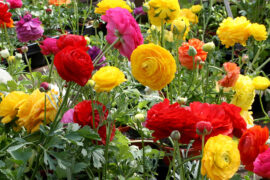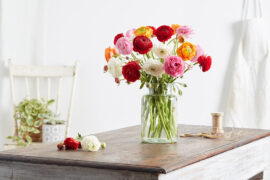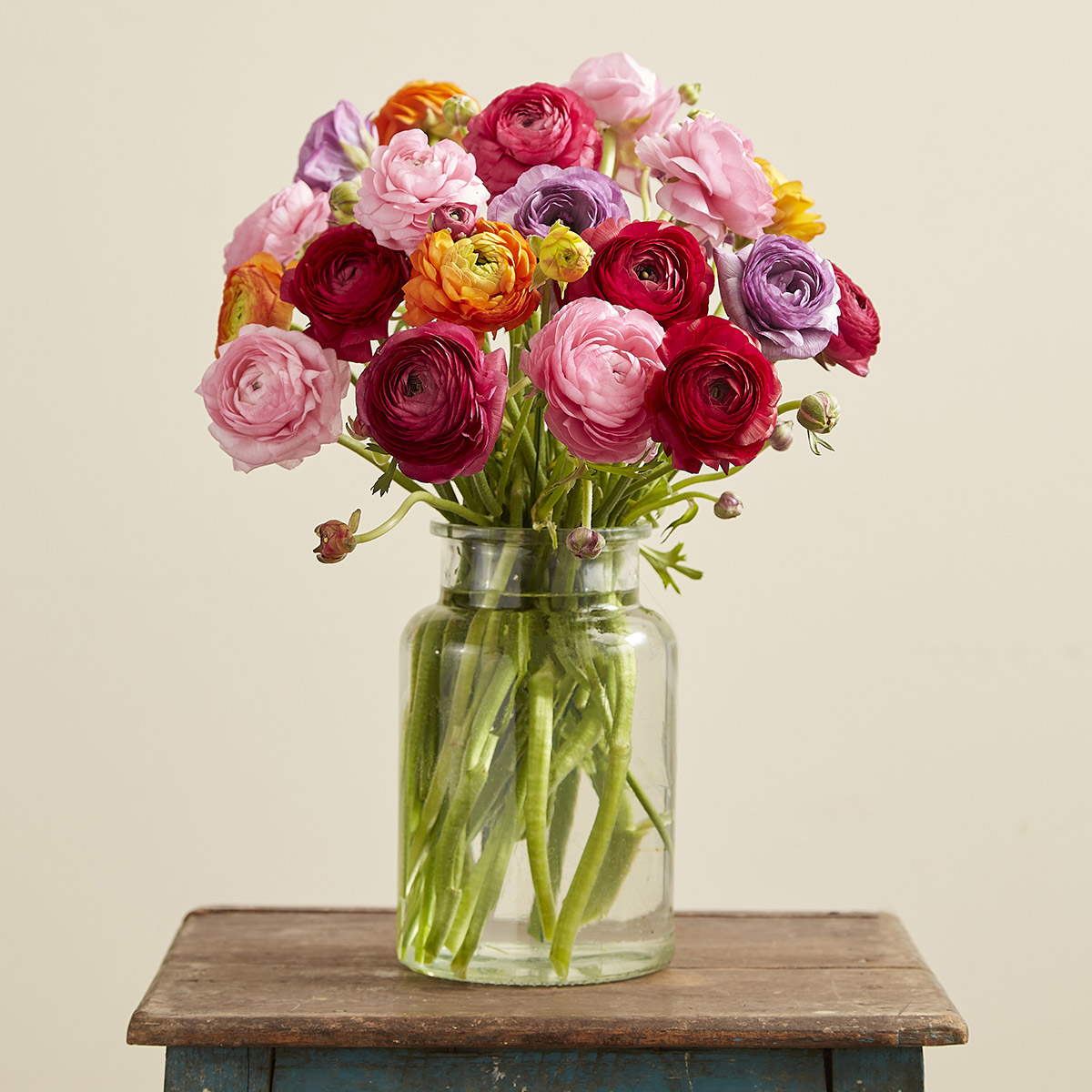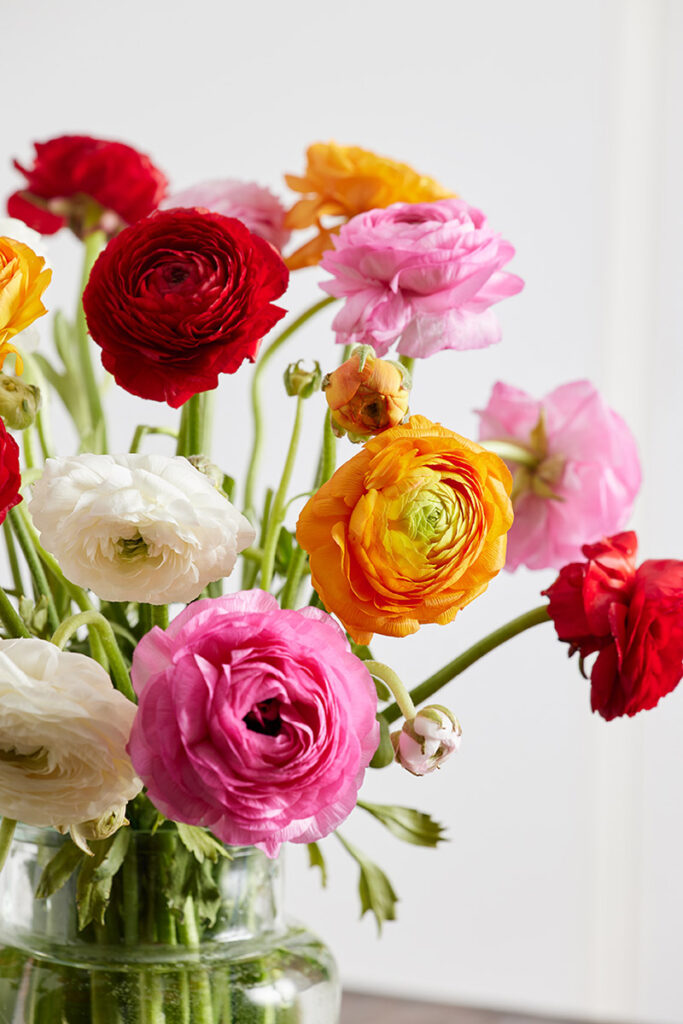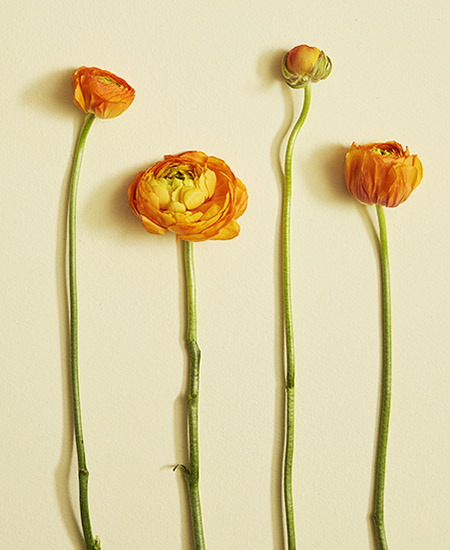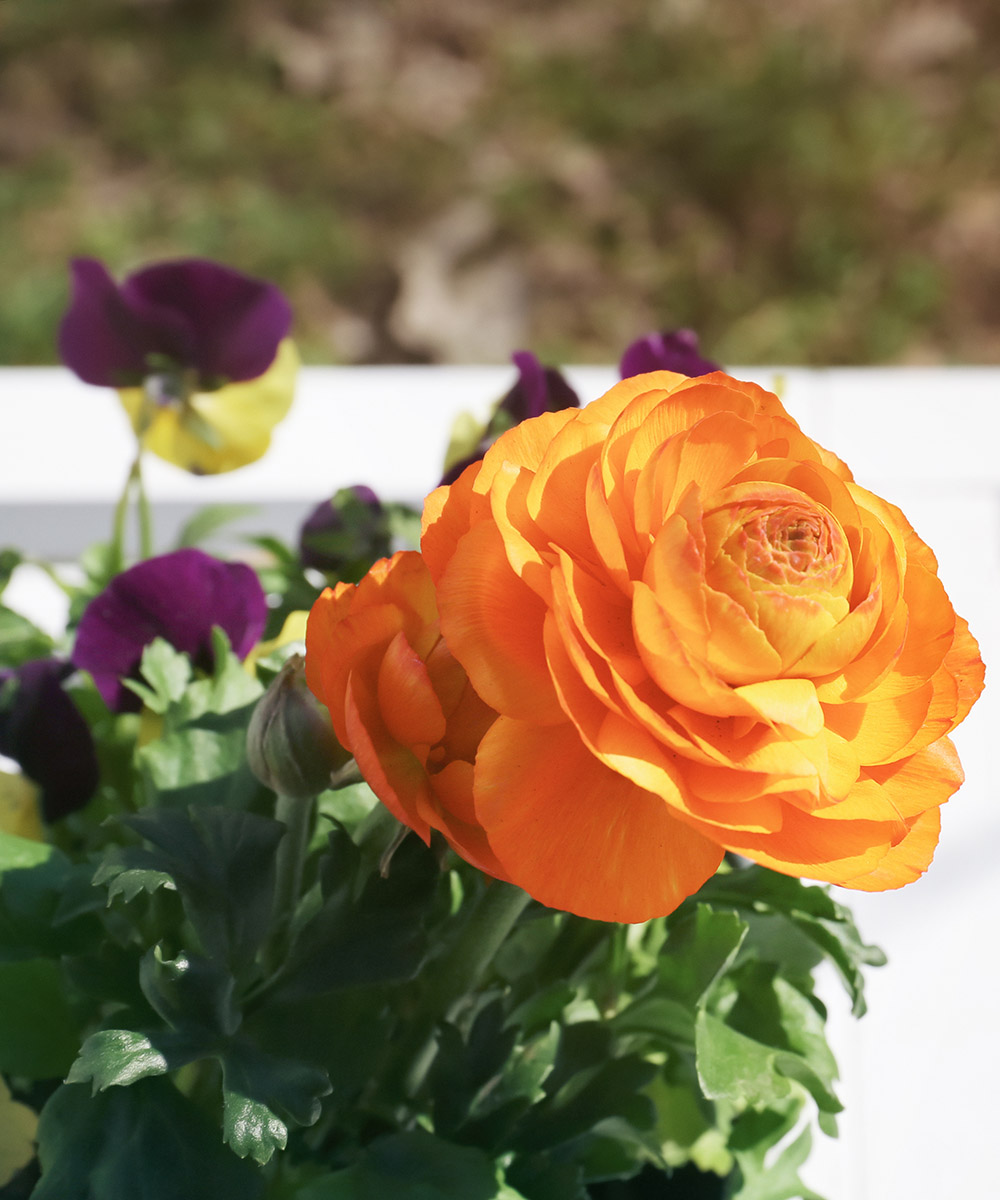
Ranunculus are not only delightful to receive as cut flowers in a bouquet but also make an enchanting addition outdoors in your garden or as container plants. Once you know your USDA hardiness zone for the time of planting and a little know-how, you’ll soon be able to enjoy these beautiful flowers year after year.
Where ranunculus grow
Ranunculus are herbaceous perennials that thrive in mild winters, long, cool springs, and balmy summers. They don’t do well in hot, humid conditions or tolerate prolonged freezing temperatures. Ranunculus are hardy in USDA zones 8 to 10 and can be grown as perennials where temperatures typically don’t plunge below 25 degrees. In colder zones, however, they are grown as annuals.
When to plant ranunculus
In warm areas, zones 8 to 10, it’s best to plant ranunculus in the fall, when there is no danger of prolonged freezing temperatures. Ranunculus planted in the fall will bloom continuously for six to seven weeks in the springtime. In the colder zones, 4 to 7, plant them in the winter or early spring; they are not entirely hardy in freezing temperatures and will not survive the winter. Spring-planted ranunculus will bloom for four to six weeks in the late spring and summer.
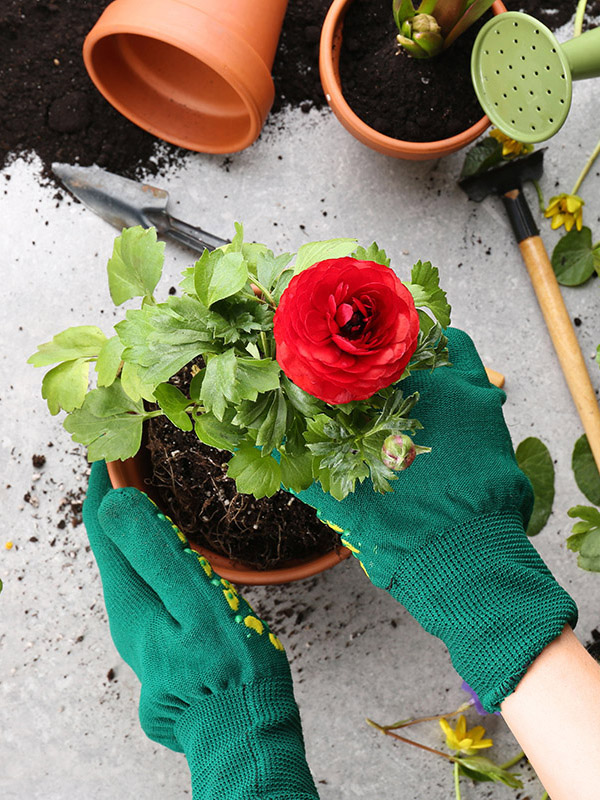
Where to plant ranunculus
Locating your ranunculus in the right spot is essential to their growth. In most cases, they will need full sun for six to eight hours a day. However, in areas where temperatures soar and the sun is harsh, it’s best to grow them in a place that gets bright shade rather than direct sun during the hottest part of the day.
They will also need light, well-draining soil to prevent root rot. If your soil is heavy, dense, and doesn’t drain well, amend it with some compost or peat moss to give it better drainage and maintain a slightly acidic pH at about 6.0 to 6.5. Stay away from planting in low areas with soggy soil and pooling water.
Air circulation around the plants is essential, too, since they are susceptible to powdery mildew that thrives in close, humid conditions. Choose an open spot that gets a breeze, and don’t crowd the plants together.
Ranunculus do very well in containers. Use a light organic potting mix amended with perlite or peat (to increase the drainage) and make sure the pot has one drainage hole at minimum to keep the roots from sitting in water.
How to plant ranunculus
You can grow ranunculus from seeds, tubers, or plants from a nursery. Most gardeners prefer to start them from tubers, but it is also possible from seed.
Starting from seed
Ranunculus are “half hardy,” meaning they can withstand short bouts of cold but not prolonged freezing temperatures. In warmer areas, plant the seeds in the garden and cover them with a thin blanket of soil after all danger of frost has passed. If cold weather is predicted, you can cover them with a protective cloth, especially at nighttime.
In either warm or cool zones, you can start seeds indoors during the winter in a light, well-draining, seed-starting mix 12 to 16 weeks before your zone’s last frost date in the spring. Spread a light covering of soil over the seeds, and keep them moist and at about 60 degrees Fahrenheit. They should sprout in 10 to 15 days, and after 60 days, when four or five true leaves appear, they should be ready to transplant into the garden or a container. Ranunculus will bloom four to six months after sowing the seeds.
Starting from tubers
When you buy tubers, make sure they are dry, firm, and whole, without breaks or splits. They come in different sizes or grades, and bigger tubers will grow more vigorous plants that produce more flowers.
Some gardeners like to soak the tubers in tepid water for one to three hours (no more!) before planting. They absorb the water and puff up, becoming more flexible and less likely to break. Soaking the tubers wakes them from dormancy and gives them a head-start on growing roots. At this point, it is optional to “pre-sprout” the tubers before planting them in the garden or a container. Plant them with the claws facing downward in a moist seed-starting mix in a shallow tray and cover them with a quarter-inch of soil. Keep the tray cool, and they should begin to develop small roots after one to two weeks. Then, they’re ready to plant.
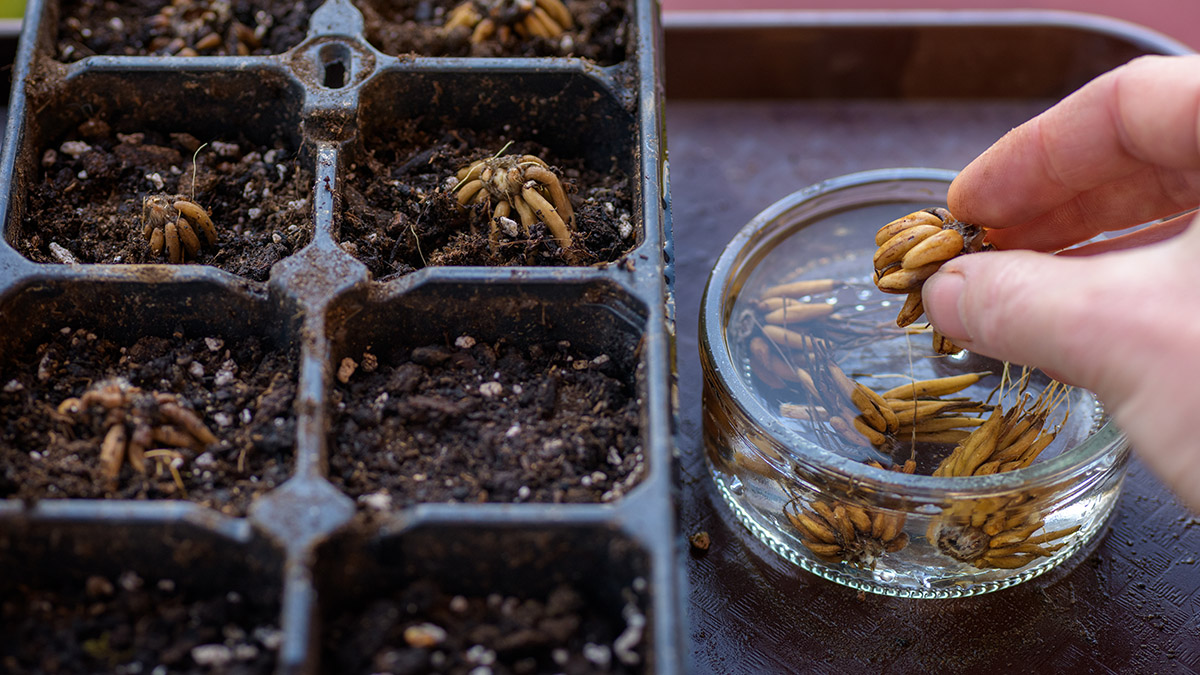
You can easily fertilize the tubers by mixing some compost with the soil before planting them. This gives the plants a boost of nutrition, and also ensures good drainage. Fertilize container-grown plants once a month with a high phosphorus, water-soluble fertilizer, and dilute it to half-strength to protect the roots.
When planting, orient the ranunculus tubers with the claws pointing downward — three to four per square foot for small tubers and up to 8 inches apart for larger ones — and cover them with 1 to 2 inches of soil. For container planting, space them no closer than 6 inches apart so there will be enough air circulation between them. Water them well after planting, and keep the soil slightly moist. This is important since ranunculus will not tolerate overly wet soil and may develop root rot. You should see sprouts after 10 to 15 days and blooms 90 days after planting.
Caring for garden ranunculus
While your ranunculus is actively growing and blooming, deadhead the spent flowers to encourage more flowering. Keep the soil cool, moist, and weed-free with a layer of mulch.
The plants will bloom from spring into the summer, but when the flowers fade and the plants begin to yellow, stop watering and let them die down naturally. This will allow them to absorb more nutrients and become stronger for next year’s growth.
If you want to overwinter the tubers in the ground and live in zones 8 to 10, cut the plants down in the fall and spread a layer of mulch near the plants to protect them from the cold.
If you live in zones 7 or colder, dig the tubers up in the fall and allow them to dry out. Then, keep them cool and dry in the winter or early spring until planting time next year.
Exquisite ranunculus blooms aren’t only attractive to humans — bees, hummingbirds, and butterflies love the blossoms, making the flowers an excellent choice for a pollinator garden. But deer and rabbits will stay away since all parts of ranunculus are toxic to animals.

